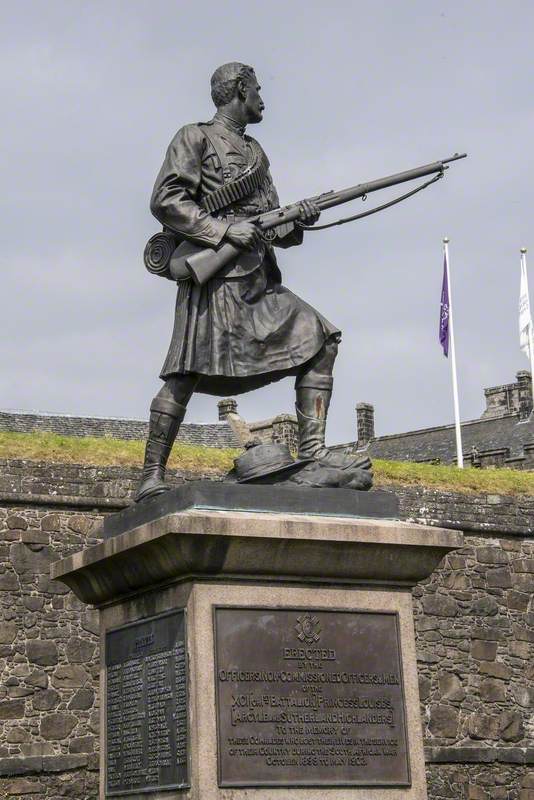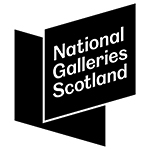
Princess Louise's Argyll and Sutherland Highlanders South African War Memorial 1907
Waller Hubert Paton (1863–1940)
Waller Hubert Paton [1] was born in Edinburgh, Scotland on 16 November 1863. His father, Walter Hugh Paton (1828-1895), and his uncle, Sir Joseph Noel Paton (1821-1901), were both painters. He attended Edinburgh School of Art and the Royal Scottish Academy Life Class in Edinburgh, and subsequently worked as painter, sculptor, printmaker and medallist. In 1896 he established a studio in Edinburgh. He began exhibiting at the Royal Scottish Academy in Edinburgh in 1887 and continued to do so regularly until 1932. He also exhibited at the Royal Academy in London; Royal Glasgow Institute of the Fine Arts; Aberdeen Artists' Society; and at the Walker Art Gallery in Liverpool. He was a versatile artist who painted numerous landscapes and produced public statues and monuments, portrait busts, statuettes, figurative reliefs and medals.
Among his commissions were a statue of King Robert the Bruce for St Conan’s Kirk, Loch Awe, exhibited at the RSA in 1896; a Boer War memorial - the Princess Louise's Argyll and Sutherland Highlanders South African War Memorial, unveiled at Stirling Castle in 1907; a relief bronze of the Chief Scout (Robert Baden-Powell) in 1911, and the Dolphin Medal for Swimming in 1911.
In 1911 he exhibited a portrait-panel in bronze of his father, Walter Hugh Paton, at the Royal Academy in London. He illustrated 'Two Old Tales Retold' (Edinburgh: Banks & Co., 1889), written by his first cousin, Mona Noel Paton (1860-1928). He also illustrated 'Vandrad the Viking, or The feud and the spell' by J. Storer Clouston (London: Thomas Nelson & Sons, 1898); and, with J. B. Blacknurn (Mrs Hugh Blackburn), 'Bards and the Birds'; selected and arranged by Frederick Noël Paton (London: Reeves & Turner, 1894).
Paton's address was given as 14 George Square, Edinburgh in 1887 and 1895; 10 Salisbury Road, Edinburgh in 1896 and 1901; 16 Bruntsfield Avenue, Edinburgh in 1898 and 1899; 39 Bruntsfield Gardens, Edinburgh in 1902 and 1906; 21 Salisbury Road, Edinburgh in 1907 and 1914; 6 Upper Gray Street, Edinburgh in 1918 and 1924; and 37 Eastfield Joppa, Edinburgh in 1932. He died in Edinburgh on 29 January 1941.
______
[1] He usually exhibited under the name Hubert Paton, possibly to distinguish himself from his father.
Text source: Arts + Architecture Profiles from Art History Research net (AHRnet) https://www.arthistoryresearch.net/

